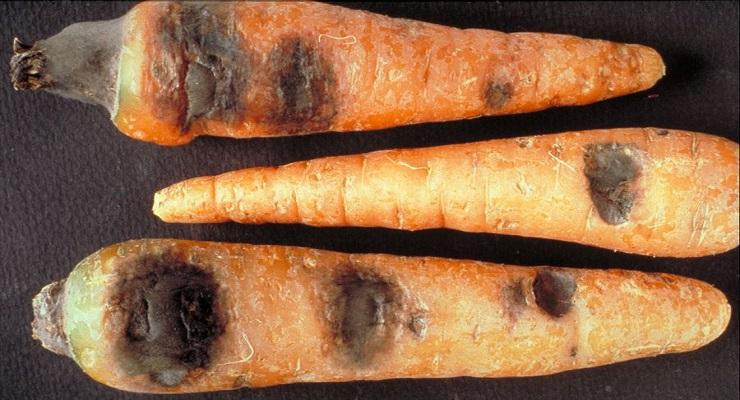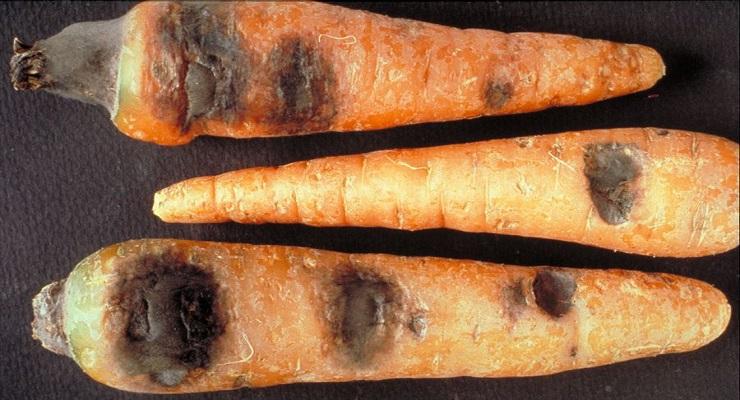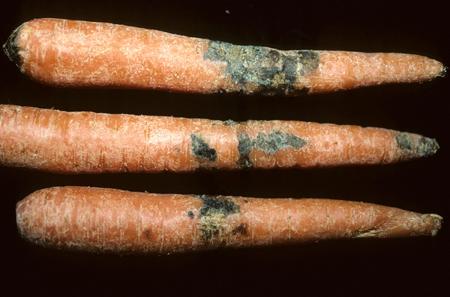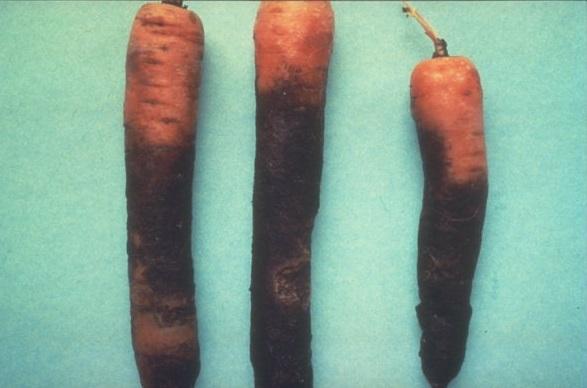Violet root rot (Rhizoctonia violacea) – identify and control

The violet root rot, Rhizoctonia violacea is widespread in many European countries. The disease does not cause major damage.
Symptoms. The attack takes place on the roots in the field but continues in the warehouses. In the field, the plants are attacked in the growing stops, where the foliage of the plants turns yellow and then wilts. The roots have spots or parts that are grey or leaden-hued. Next to them, the tissues deepen and become covered with a brown-purple mycelium. In a more advanced phase of the attack, the sclerotia appear on the mycelium felt and their colors range from violet to black. The attacked areas have sunken tissues, that are brown and rot. When harvesting, the affected plants have cracked, strangled, deformed roots.



Violet root rot pathogen attacks carrot plants that have grown on acid soils, where there is excess humidity, with no draining systems and temperatures ranging from 25 to 30°C. During the vegetation phase, the fungus can spread during the direct contact between plants, by tools, by larvae that carry mycelium fragments, through insects, or even through the soil water. The fungus survives from one year to another through the sclerotia. This fungus also attacks parsley, parsnip, beet, etc.
Prevention and control. In the vegetable crop rotation system, the root vegetables must return on the same parcel after at least five years. The interruption can be done by planting garlic, onion, leek, or other crops that are not affected by this fungus. The root vegetables that have been affected by this fungus, can be used for the animals’ diets, but their gastric juices will not be able to destroy the sclerotia, so their excrements can not be used as organic fertilizer for the vegetable garden.
During the vegetation period, it is recommended to carry out treatments with specific fungicides.
Recommended products
-
You can find products on a different store
Change Store -
You can find products on a different store
Change Store -
You can find products on a different store
Change Store -
You can find products on a different store
Change Store -
You can find products on a different store
Change Store -
You can find products on a different store
Change Store -
You can find products on a different store
Change Store -
You can find products on a different store
Change Store -
You can find products on a different store
Change Store -
You can find products on a different store
Change Store -
You can find products on a different store
Change Store -
You can find products on a different store
Change Store -
You can find products on a different store
Change Store -
You can find products on a different store
Change Store -
You can find products on a different store
Change Store -
You can find products on a different store
Change Store -
You can find products on a different store
Change Store -
You can find products on a different store
Change Store -
You can find products on a different store
Change Store -
You can find products on a different store
Change Store -
You can find products on a different store
Change Store -
You can find products on a different store
Change Store -
You can find products on a different store
Change Store -
You can find products on a different store
Change Store















































































































































































































































































































































































































































